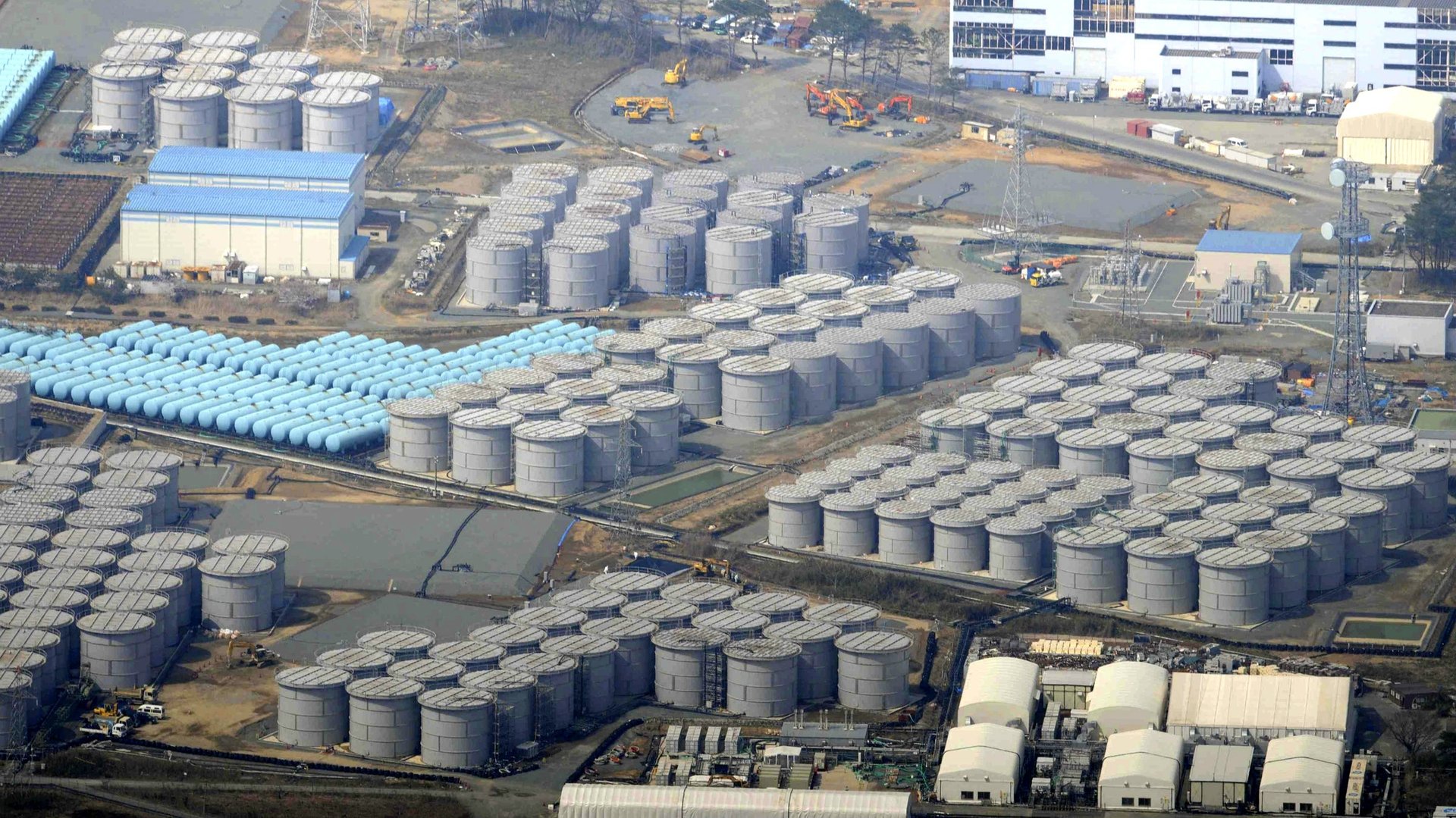Why is it so hard to stop Fukushima from leaking?
There was more bad news from Japan’s stricken Fukushima Daiichi nuclear power plant today: It’s still leaking. The plant’s operator, Tokyo Electric Power Company, also known as Tepco, said that another 300 tons of highly contaminated water had leaked from one of its storage tanks.


There was more bad news from Japan’s stricken Fukushima Daiichi nuclear power plant today: It’s still leaking. The plant’s operator, Tokyo Electric Power Company, also known as Tepco, said that another 300 tons of highly contaminated water had leaked from one of its storage tanks.
But if a plastic bag can hold water, why is it so difficult to stop Fukushima from leaking?
The problem this time can be traced to simple human error. A valve in the containment wall around a storage tank had been left open, allowing contaminated water to escape. A Tepco official admitted that workers had “failed to discover the leak at an early stage” and said the company would need “to review not only the tanks but also our monitoring system.” Tepco has yet to rebuild trust in its management of the situation at Fukushima after repeated accusations of ineptitude and dishonesty.
Beyond careless human errors, the job at Fukushima is a tough one. As Reuters reports, Tepco has been rushing to construct adequate storage space to cope with the large quantity of water being pumped through the plant’s overheated reactors to keep them cool. These storage tanks were bolted together in a hurry using plastic at the joints, which is less durable than other methods. (More durable tanks are being built with sturdier joints.)
National Geographic explained earlier this month how the massive underground storage tanks previously used by Tepco to contain contaminated water had been repeatedly breached, causing past leaks. The problem was not just keeping contaminated water in, but keeping clean water out. The seven underground tanks under the plant had a total capacity of 60,000 tons, but leaks from at least three of these forced Tepco in April to pump out the contaminated water and store it above ground, where it is now.
Groundwater, constantly on the move, picked up radiation around these underground tanks and eluded Tepco’s insufficient monitoring system. “Big surprise—water does flow downhill,” radiation expert Janette Sherman told the magazine. “If you’ve ever had a leak in your house during a storm, you know how hard it is to contain water. There’s a lot of water going into the plant, and it’s got to go someplace. It’s very hard to stop this.” Ken Buesseler, a US marine chemist, told CNN that groundwater should be thought of like a river. “If there’s a flow to the ocean,” he said, “you can put up a dam, but eventually it’s going to go up and over it or around to the sides…it flows from higher to lower, and the ocean’s the low point.”
There is widespread agreement among experts that storing water and fighting leaks would only ever be a temporary solution to avoiding radiation contamination around the plant. Last week a proposal to build an ice wall around Fukushima came across like science fiction. This week it seems like a rather good idea.